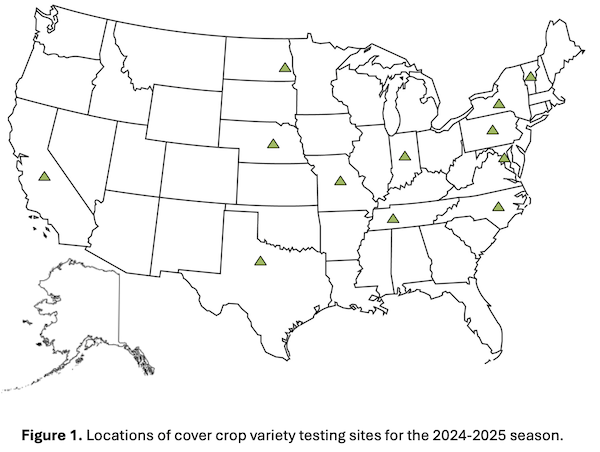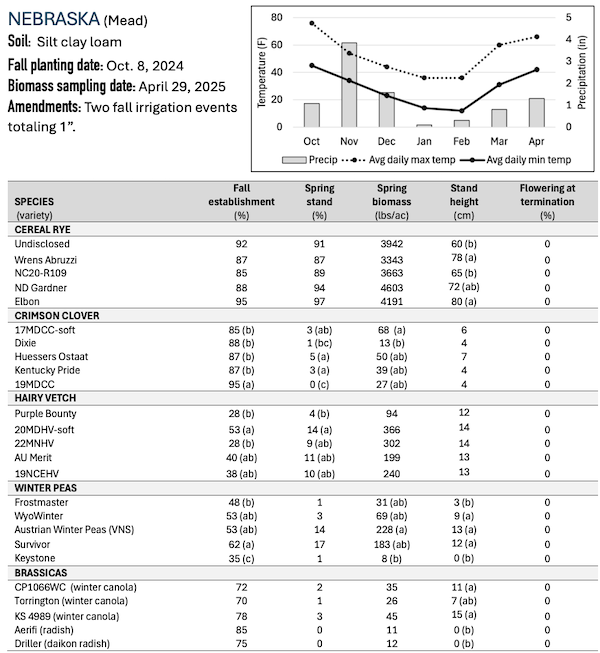Cover crop adoption has risen significantly in the last ten years, though research into their use and effectiveness has been slow to catch up. As part of a $10 million effort funded by the U.S. Department of Agriculture’s National Institute of Food and Agriculture, the first “National Cover Crop Variety Test Report” aims to help farmers learn what works best in their region while helping the seed industry better forecast demand.
In 2017, the USDA Census of Agriculture documented 15.4 million acres of cover crops grown on over 150,000 U.S. farms. Based on adoption trends reported in the SARE/CTIC National Cover Crop Survey, U.S. cover crop acreage likely reached about 21 million acres last fall, according to University of Missouri’s Center for Regenerative Agriculture (CRA). However, this steady growth in acreage has put pressure on U.S. seed supplies of cover crops. With more investments supporting adoption of cover crops in the U.S. than ever, seed company leaders are concerned that there is insufficient seed supply for further growth, not to mention inadequate variety options for producers across the country.
An ongoing project by the University of Missouri’s Center for Regenerative Agriculture, along with the American Seed Trade Association and over a dozen partner organizations, the new research included 25 varieties of six different cover crop species planted across 12 sites in 11 states during the 2024-2025 cover crop growing season.
According to Dr. Etienne Sutton, project manager, “The data we report on includes cover crop biomass, winter survival, flowering date and other observations such as weed control and plant disease occurrence where relevant. Weather data for each test location is also included in the report.”
At many sites, the researchers note that there were significant differences across varieties for one or more evaluation metrics. Some of these differences stemmed from contrasting climatic tolerances and breeding for regional adaptation. Overall, the national trial suggests there can be significant benefits to using regionally adapted varieties, especially in terms of biomass production and winter survival. For instance, ‘Wrens Abruzzi’ and ‘Elbon’ cereal rye excelled at sites with milder climates, but in the harsh growing conditions of North Dakota, ‘ND Gardner’ (developed by North Dakota State University), outperformed all other cereal rye varieties.
Hairy vetch consistently outperformed crimson clover and winter peas in terms of winter survival and biomass at northern locations, but there was also evidence that efforts to breed for more winter-hardy varieties of crimson clover and winter peas are paying off. Although not as common as cereal rye and legumes, winter canola showed strong promise as an overwintering cover crop, offering spring biomass and weed control comparable to that of cereal rye at several sites. Even the radishes, which winter-killed at the majority of sites, left behind impressive residue mats that effectively suppressed weeds in the spring.
The researchers note that cereal rye varieties frequently showed significant differences in maturity and stand height, reflecting efforts to breed for different management systems and goals. However, there were also instances, especially for the legumes, were none of the varieties offered strong performance, indicating a need for continued breeding efforts to develop cover crop varieties suitable for the wide range of environmental and management conditions across the U.S. The full report is HERE.
The trial network will continue to expand in future years to include additional sites, species, and varieties. In addition to testing cover crop varieties, the National Cover Crop Variety Development Project is conducting breeding efforts to develop new cover crop varieties with superior traits, evaluating root growth and forage quality of new varieties, helping more farmers learn how to become cover crop seed producers, and working to advance overall adoption of improved cover crop varieties. More information on the project is available HERE.







